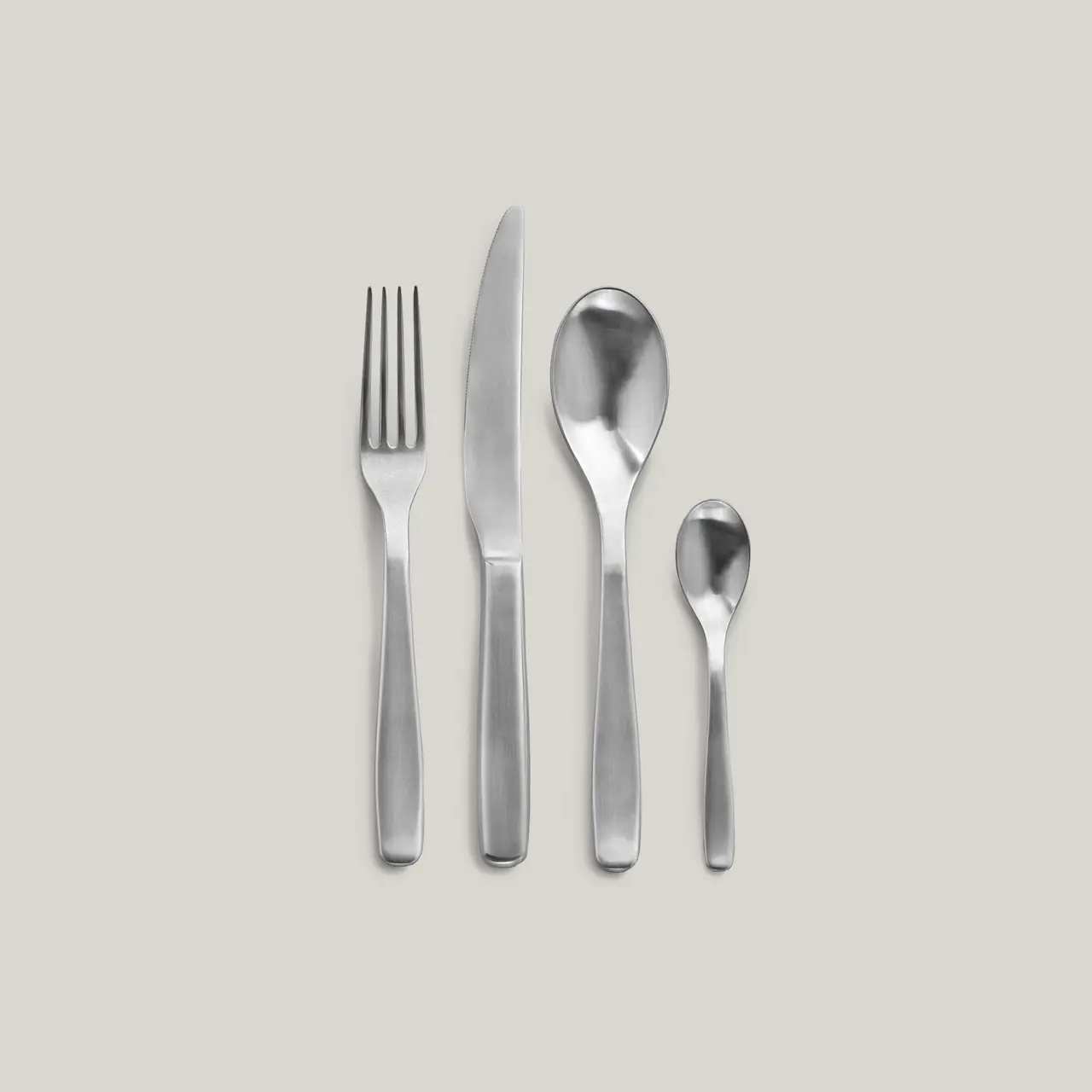From Function to Fashion: The Evolution of Flatware in Home Design

Introduction to flatware in home design
Flatware, which includes forks, knives, and spoons, is not just functional but also adds a touch of elegance to your dining experience. The right choice of flatware can enhance the look of your table setting and complement your overall home decor. It is important to consider the style, material, and design of flatware to create a cohesive and stylish look for your dining table.
Historical origins of flatware
Flatware, which includes forks, knives, and spoons, has been around for centuries. Historians believe that the use of flatware dates back to ancient Egypt and Asia, where people used simple utensils made of wood or bone. The Romans then developed more sophisticated flatware, with elaborate designs and decorations. Medieval Europe saw the rise of personalized flatware for nobility, often made of expensive materials like silver and gold. The Industrial Revolution brought about mass production of flatware, making it more affordable for the general population. These historical origins have shaped the flatware we use today, combining both functionality and aesthetics in home design.
Functionality of flatware in dining settings
Flatware is not just about looks; its functionality plays a crucial role in dining settings. The shape of the flatware affects how easy it is to pick up the food and how comfortable it feels in your hand. Knives should be sharp for cutting, forks need to have sturdy tines for spearing food, and spoons should be deep enough to hold liquids without spilling. The right flatware can enhance your dining experience by making it easier and more enjoyable to eat.
Evolution of flatware materials
Flatware materials have evolved over time from simple metals like silver and pewter to modern options such as stainless steel and titanium. Each material brings its own unique benefits, like durability, resistance to corrosion, and ease of maintenance. Silver was popular due to its elegance, while stainless steel is favored today for its affordability and practicality. Titanium is gaining popularity for its strength and light weight. As technology advances, materials continue to change to meet the needs of modern households.
Transition of flatware from utility to fashion
Flatware used to be solely for eating, but now it’s a statement piece in home decor. Flatware now comes in various designs and materials to complement your dining table. Stainless steel and titanium are popular choices for modern flatware. Designers are paying more attention to flatware aesthetics, turning them into fashion items for your table setting.
Influence of design trends on flatware
Design trends play a significant role in shaping the look of flatware in homes. Sleek, minimalist designs have gained popularity in recent years, influencing the shapes and finishes of flatware sets. Matte black and rose gold are emerging as trendy finishes, giving flatware a modern and stylish appeal. Geometric patterns and organic shapes are also making their way into flatware designs, adding a unique touch to table settings. Keep an eye on current design trends to stay updated on the latest styles in flatware for your home.
Modern innovations in flatware design
In recent years, flatware design has seen some exciting innovations that blend practicality with style. Designers are finding new ways to make flatware not just functional but also fashion-forward. Sleek and minimalist designs are on the rise, with a focus on clean lines and contemporary aesthetics. Innovative materials such as titanium and matte finishes offer a modern twist to traditional flatware sets. Ergonomic shapes are also gaining popularity, making utensils easier and more comfortable to hold. These modern designs are not only enhancing the dining experience but also adding a touch of sophistication to the table setting.
Flatware as a statement piece in home decor
Flatware, typically associated with functionality, has evolved to be a statement piece in home decor. Here are a few ways flatware can make a bold statement in your home:
- Unique Designs: Flatware sets now come in a variety of designs and finishes, adding a touch of style to your table setting.
- Mix and Match: Mixing different flatware sets can create a visually appealing and unique look for your table.
- Colorful Options: Colored flatware is gaining popularity for those looking to add a pop of color to their dining experience.
- Materials Matter: From stainless steel to gold-plated options, the material of your flatware can reflect your style and taste in home decor.
Upgrade your table setting with flatware that not only serves its purpose but also enhances the overall aesthetic of your home.
Sustainability and ethical considerations in flatware production
Sustainability and ethics are becoming more important in the flatware industry. Eco-friendly materials like bamboo, stainless steel, and recycled metals are gaining popularity. Companies are also focusing on ethical labor practices and reduced environmental impact in the production process. Some brands prioritize fair trade and ethically-sourced materials to create sustainable flatware options.
Conclusion: The future of flatware in home design
The future of flatware in home design looks promising. As people continue to pay more attention to detail in their homes, flatware becomes not just functional but also a fashion statement. Designers are exploring new materials and shapes to cater to varying aesthetics. The integration of technology in flatware design is also a possibility, enhancing both form and function. As trends evolve, flatware will likely become more customizable, offering a range of options to suit individual preferences and styles.


Leave a comment